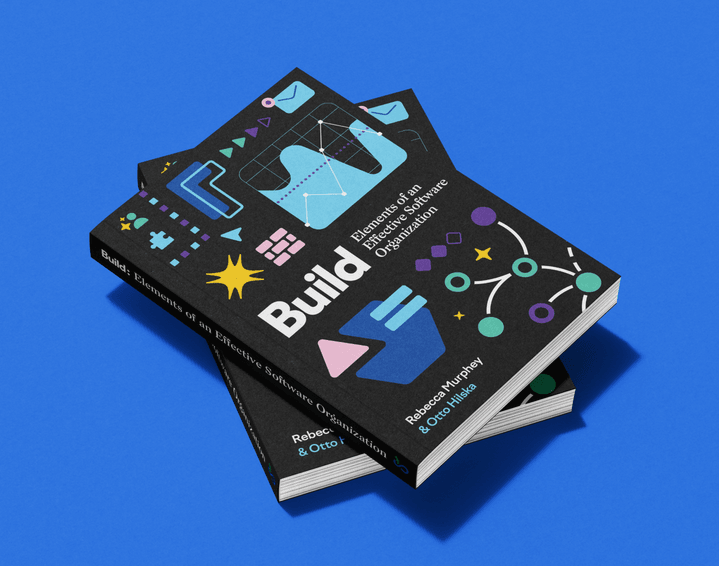While CDQ are naturals at helping their customers organize their master data, their own engineering organization faced challenges with visibility — especially as a remote team spread across Europe.
Martin Ofner, Head of Software Development and Operations at CDQ, faced a common challenge: without being in an office or joining every standup, how could he (and other engineering leaders) understand what was happening, identify bottlenecks, and help teams progress without making them feel micromanaged?
Without being in the office or attending every team’s daily standup, it was challenging to know what was happening, why something wasn’t done yet, or where the bottlenecks were. I didn’t want to interrupt people or make them feel like they needed to explain why they’re working slowly.

Head of Software Development and Operations
Aside from day-to-day visibility, CDQ’s leadership team needed better data about their engineering efforts. Their CFO wanted reliable calculations about development versus operations investment, while product leadership felt roadmap implementation could be faster.
Initially, the team tried using manual time tracking in Jira, but Martin was sure there had to be a better solution. After researching engineering intelligence platforms, CDQ chose Swarmia because:
- Swarmia was the easiest and smoothest to get started and try the product firsthand
- Our fair pricing made sense for a company just starting their engineering metrics journey
Starting small builds momentum
Instead of a company-wide rollout, CDQ began with two volunteer teams: one platform team and one product team.
Leadership communicated clearly that Swarmia wasn’t for micromanagement or performance evaluation, but to improve engineering processes and help engineers have more control over and feel more connected to their own work.
Martin recommends this gradual approach since it protects engineers’ cognitive load, allowing them to focus primarily on developing software while gradually integrating new tools into their workflow.
He also emphasizes the importance of finding functionality that genuinely helps teams in their daily work, rather than just producing metrics for management.
These early teams quickly found more value than they first expected, and even started sharing their positive experiences with others — which had more teams asking when they could get involved.
Communication was really important for this kind of tool. We’re not micromanaging, we’re not checking individual performance, and there’s no blaming people at all — it’s just better for the company and for becoming better at your own work.

Head of DevOps
From 38% to 60% product impact
After a six-week evaluation, CDQ continued with Swarmia and soon started seeing real change in their engineering effectiveness.
Using Swarmia’s investment balance view, they discovered they were spending just 38% of their time on what they called “product impact” — the sum of new features and improvements. They set a goal to reach 50–60%, which they’ve already achieved.
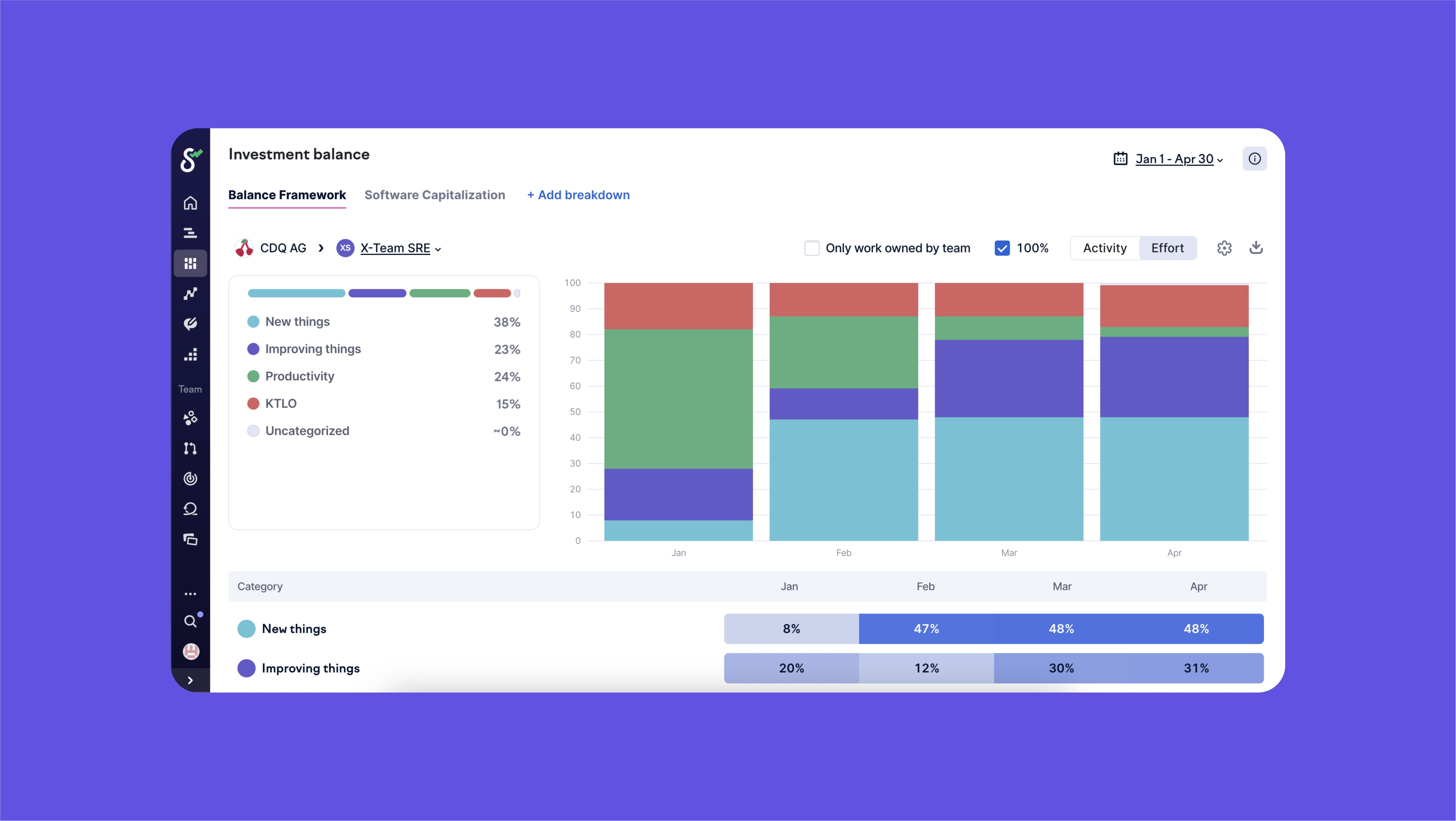
Shining a light on this data sparked a cultural shift inside CDQ. Teams began holding enablement sessions explaining that while maintenance and productivity work matter, they wanted to invest more time into product development — and importantly, figuring out how they were going to do that.
Martin was surprised to find that Swarmia enabled more autonomous team decision-making than he expected — teams began challenging priorities based on evidence rather than just following management directives.
With Swarmia, teams can challenge themselves without managers dictating priorities. This has enabled more autonomous, self-managing teams than I thought possible.

Head of DevOps
Making data part of daily work
Engineers at CDQ quickly adopted Swarmia’s working agreements and GitHub-Slack notifications. They’d tried creating team agreements before, but often found they ended up gathering dust in their internal systems.
With Swarmia, their working agreements actually stuck because they’re woven into daily work through helpful notifications that keep everyone on the same page.
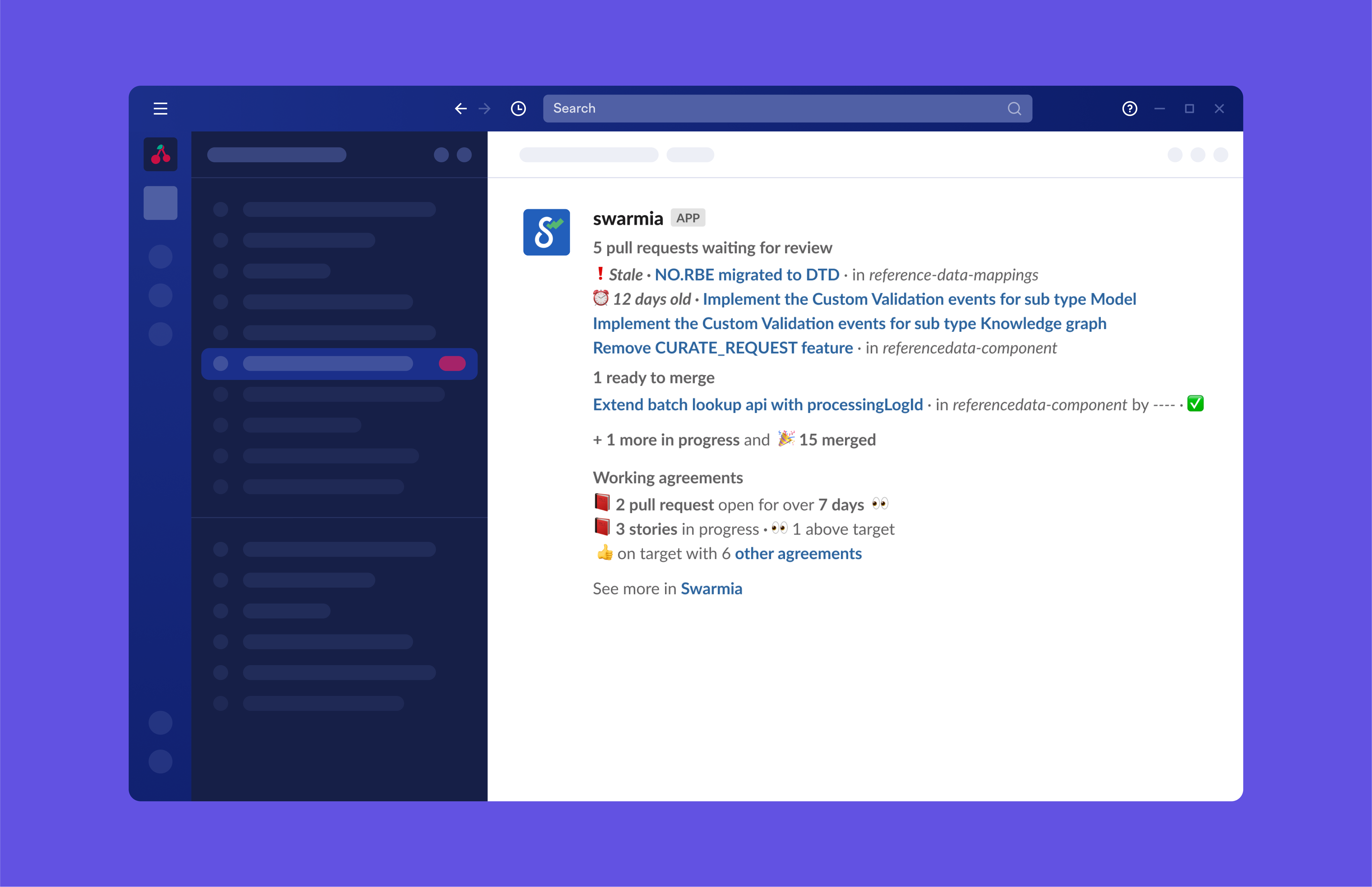
In the past, CDQ had also tried writing scripts that extracted data from Jira to display in external dashboards, but the system never gained traction. Now with Swarmia, real-time data from Jira and GitHub is a part of day-to-day processes and accessible for everyone in the organization.
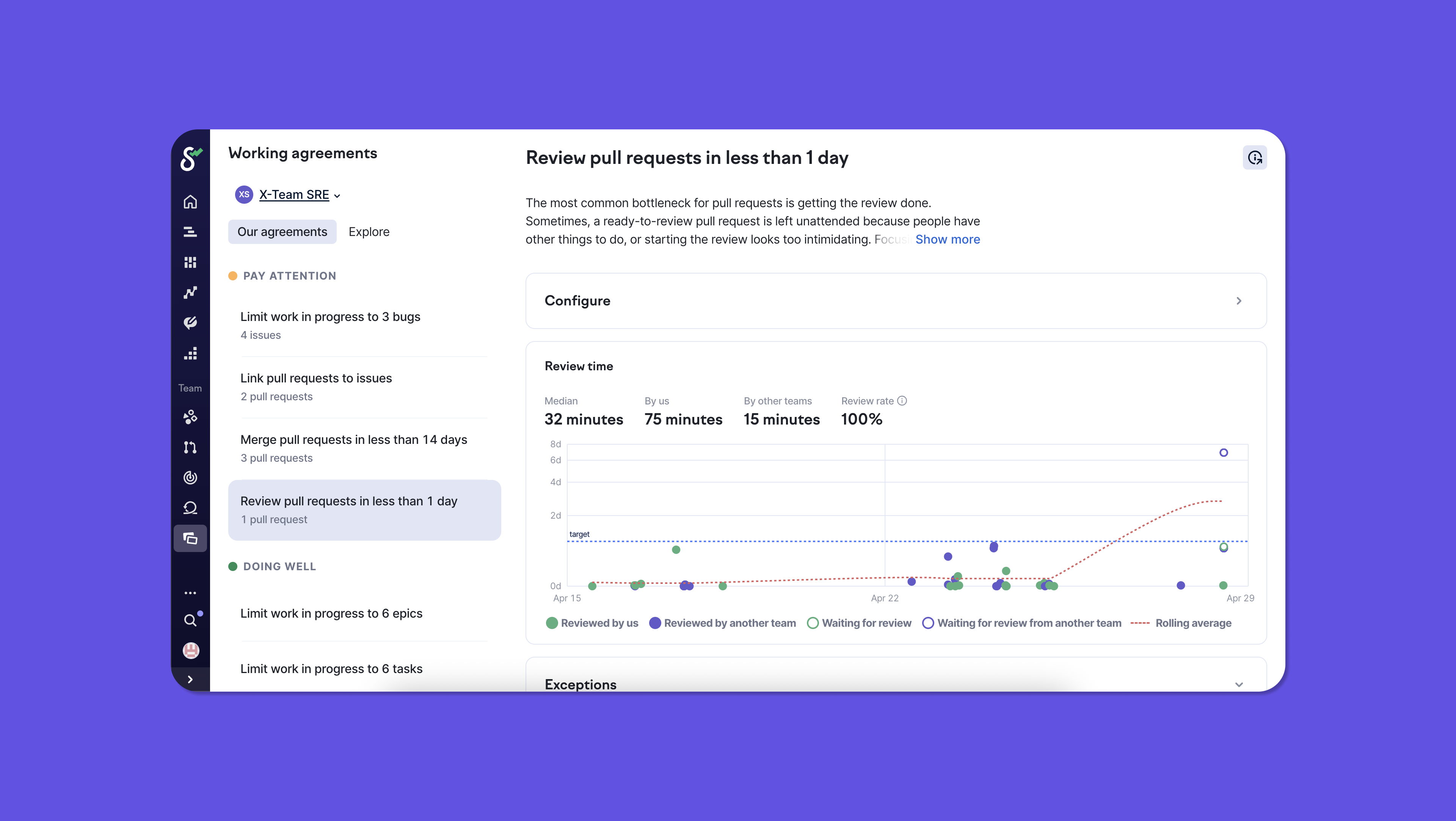
The accessibility of engineering data is useful for other departments, too — CDQ’s Head of Product now has a one-minute morning routine of checking Swarmia daily summaries, allowing him to spot issues and follow up with teams about priorities and blockers much more efficiently.
Swarmia has already changed our engineering culture. The team is now focused on how individuals can contribute to that impact. Swarmia makes this information transparent, which helps everyone make better decisions.

Head of DevOps
Building for the future
With investment balance and working agreements running smoothly, CDQ is expanding their use of Swarmia — with a recent launch of quarterly developer experience surveys.
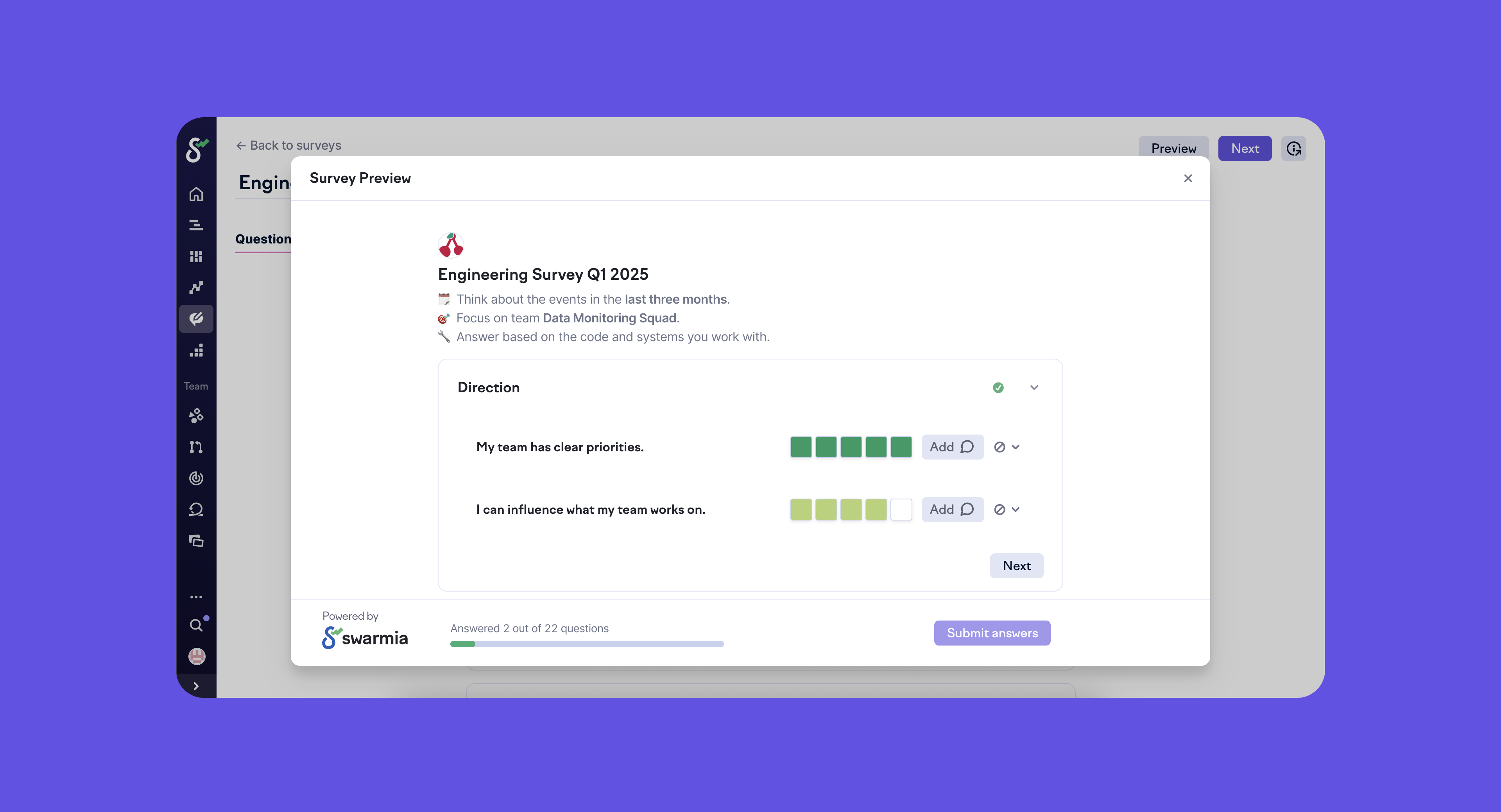
Looking ahead, CDQ plans to focus on Swarmia’s flow metrics. Having successfully increased their product impact from 38% to 60%, they now want to understand why some work doesn’t move quickly enough and identify collaboration issues between teams.
In 2025, there is no other way to manage teams than by using tools that analyze data and present insights in an easily consumable way. Having a smart tool like Swarmia that collects data and provides a good base for insights is the way to go.
Swarmia now sits at the heart of CDQ’s engineering culture, helping teams make better decisions, work together more effectively, and bring more value to customers.
